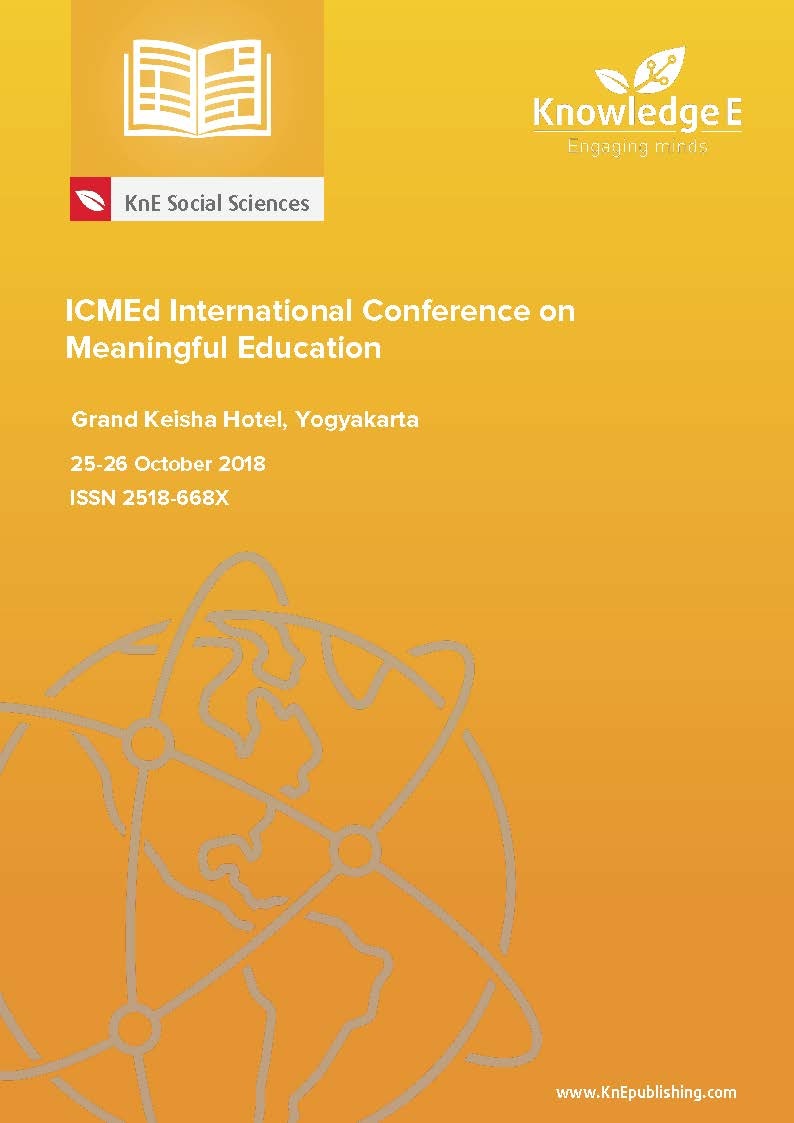Student Worksheet Based on Wayang for Elementary School
DOI:
https://doi.org/10.18502/kss.v3i17.4641Abstract
Wayang is one of the main culture in Indonesia. According to UNESCO, wayang is masterpiece of oral and intangible heritage of humanity. Unfortunately, wayang is lack of preservation. This study is intended to develop student worksheet based on wayang for elementary school. Developing student worksheet based on wayang in elementary school is a new potential way for preservation. The aim of this research is to know
feasibility of student worksheet based on wayang. This research design modified from development model of Borg and Gall, which was done in the ten steps of research. The result of this research: Score of material expert is 4.16 (Good), score of media expert is 4.28 (Very good), score of preliminary testing field is 4.45 (Very Good), score of main field testing is 4.46 (Very good), and operational field testing score is 4.32 (Very
Good). After all step have been finished, development of student worksheet based on wayang is valid for instruction.
Keywords: Student Worksheet; Character of Wayang
References
Prihatini, Arti.(2015). Pengintegrasian Konten Budaya Lokal dalam Buku Tematik Pegangan Siswa Kelas V Sekolah Dasar. Lingua, 12 (2): 175-187September 2015. Universitas Negeri Malang.
Byard-Jones TIM.(2001).Development in Performance Practice The Creation of New Genres and Social Transformation in Yogyakarta Wayang kulit.Taylor & Francis Group.Vol.11. Hlm 43-54
Indaryati, I., & Jailani, J. “Pengembangan media komik pembelajaran matematika meningkatkan motivasi dan prestasi belajar siswa kelas V.” Jurnal Prima Edukasia, 3(1), 84-96. doi: http://dx.doi.org/10.21831/jpe.v3i1.4067, (2015).
Ibrahim & Zubainur, C. M. “Integrative curriculum in teaching science in the elementary school.” Journal of Arts, Science & Commerce. 4 (1). 48-54. (2015).
Cohen, M. I. (2018). The dr. walter angst and sir henry angest collection of indonesian puppets: The structure of the conjuncture. Asian Theatre Journal: ATJ, 35(2), 300- 328. Retrieved from https://search.proquest.com/docview/2102831076?accountid= 31324
MARETTA, Y. (2016). Preparing prospective teachers in integrating science and local wisdom through practicing open inquiry. Journal of Turkish Science Education, 13(2) Retrieved from https://search.proquest.com/docview/1824858201?accountid=31324
Wibawa, Lutfi. (2017). Identification of Local Wisdom Values in the Village Bejiharjo for Youth Conflict Resolution Education.Advances in Social Science, Education and Humanities Research (ASSEHR), volume 66 1st Yogyakarta International Conference on Educational Management/Administration and Pedagogy (YICEMAP 2017): Atlantis Press.
Vembriyanti, y.2017.Pengembangan LKS berbasis kearifan lokal. JOM FKIP. Riau.
Soemardjan, Selo.1994.Culture, Development&Democracy.Tokyo:The United Nations University Press
Rif’an, Ali.(2010).Buku Pintar Wayang. Jogjakarta:Garailmu
Darmojo, H & Jenny R.E. Kaligis.(1993). Pendidikan IPA 2. Depdikbud: Yogyakarta Prastowo, Andi.(2011). Panduan Kreatif Membuat Bahan Ajar Inovatif.Yogyakarta: Divapress
Ki Sumanto Susilomadya. (2014).Mari Mengenal Wayang.Yogyakarta:adiwacana
Borg, W. R. & Gall, M. D. “Educational research: An introduction (4thed).” New York: Longman, Inc. (1983).
Kern, Richard.2014. Language, Teaching and Literacy.University of California, Berkeley. Publisher: Cambridge University Press; Online
data kepariwisataan.go.id, retrieved on July 2016.
Puspita Sari, Dian.(2015). Pengembangan LKS Tematik Materi Jenis – jenis Pekerjaan untuk Kelas IV MI/SD. SKRIPSI UINi

